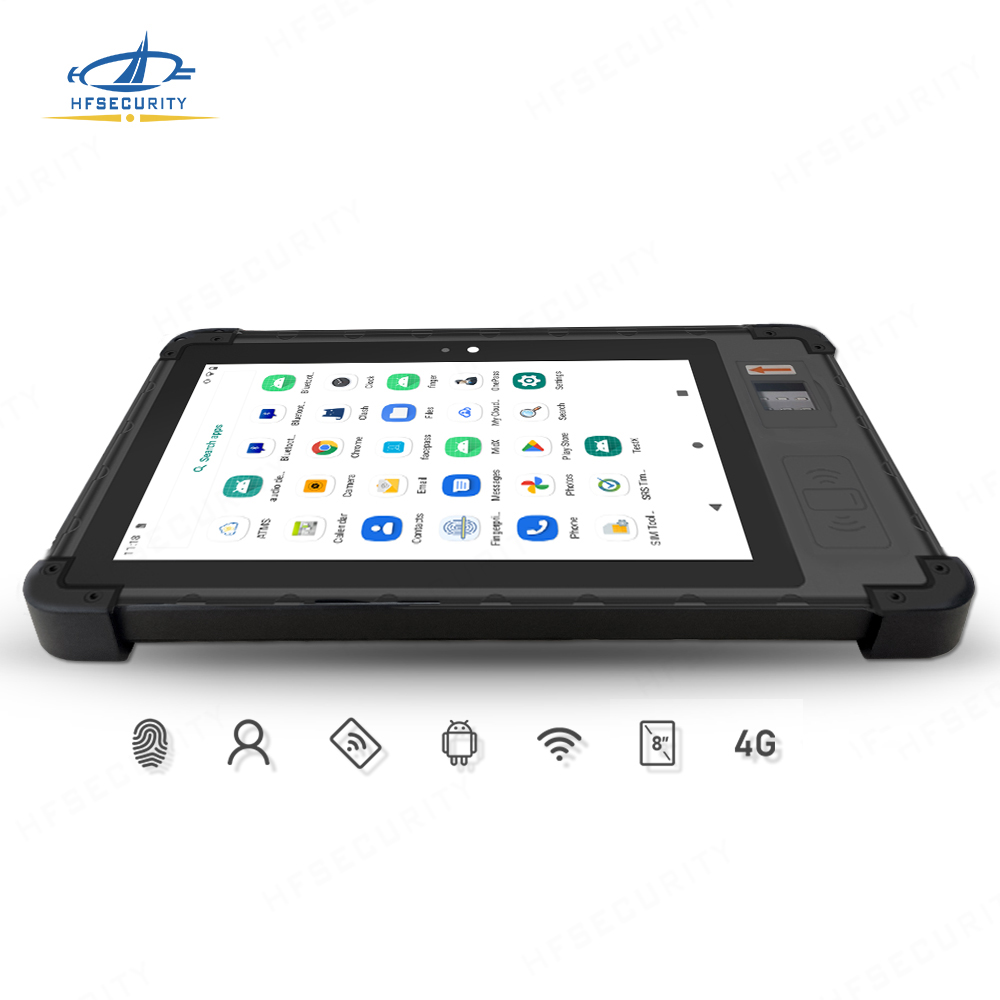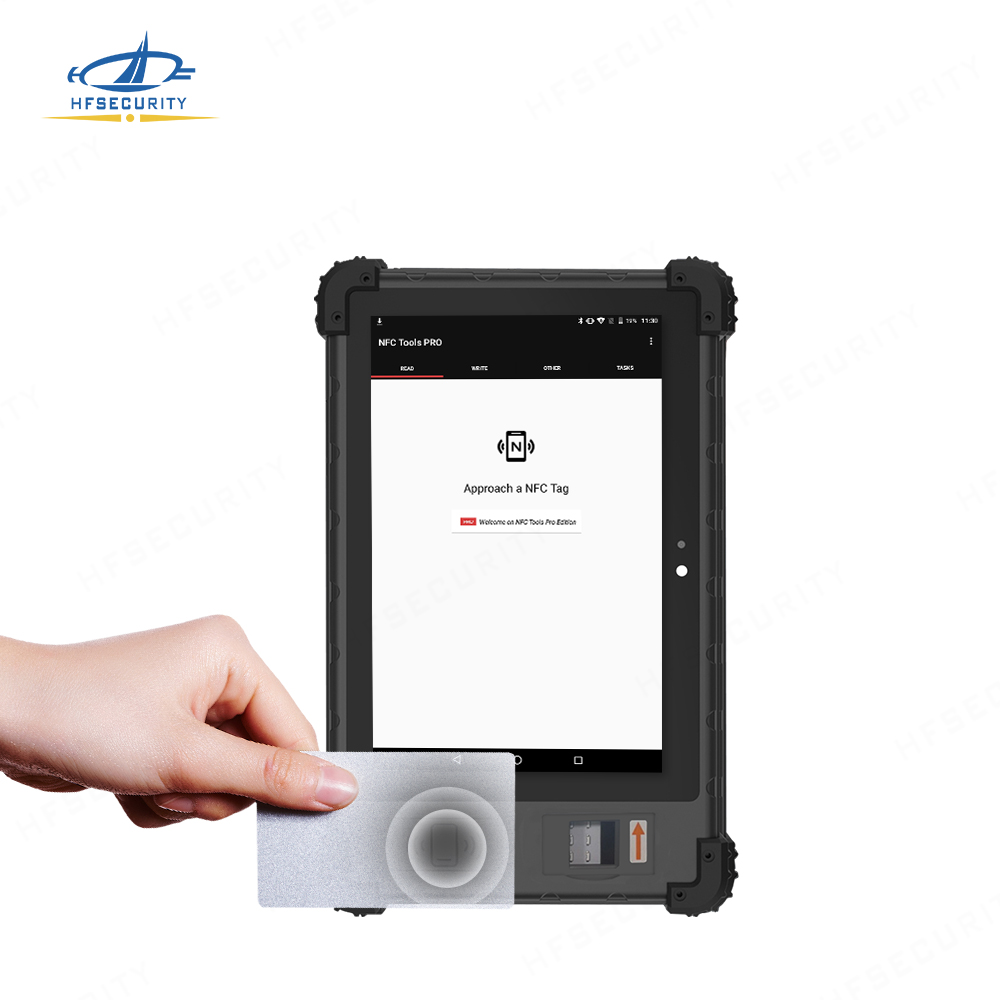This article will answer those questions and explore the types, applications, functions, and future of biometric tablets to help you understand their growing importance in modern business and security landscapes.
What is a Biometric Tablet?
A biometric tablet is a portable device that integrates biometric authentication technologies to verify a user’s identity. Unlike traditional tablets, which rely on PINs or passwords, biometric tablets use unique physiological characteristics like fingerprints, facial features, or iris patterns to grant access or record data.
These tablets are often used in environments that require high levels of identity verification, such as government projects, border control, healthcare, banking, and elections.

Main Features of a Biometric Tablet
A biometric tablet is an advanced device designed to capture and verify an individual’s unique biological traits for identity authentication. The main features of a biometric tablet typically include:
Multi-Modal Biometric Recognition
Most biometric tablets support multiple biometric modalities such as fingerprint scanning, facial recognition, iris or retina scanning, and palm vein recognition. This versatility ensures higher accuracy and security.
High-Resolution Sensors
Equipped with high-quality optical or capacitive sensors, biometric tablets can capture precise fingerprint or iris patterns, which improves the reliability of identification and reduces false acceptance or rejection rates.
Robust Processing Power
Biometric tablets usually come with powerful processors and sufficient memory to handle real-time biometric data processing and verification, ensuring fast and seamless user experience.
User-Friendly Interface
They feature intuitive touchscreens and easy-to-navigate software, which simplifies enrollment and authentication procedures for both operators and end-users.
Connectivity Options
These devices support various connectivity methods such as Wi-Fi, Bluetooth, USB, and sometimes NFC, allowing flexible integration with external systems like attendance management or access control platforms.
Security Features
To protect sensitive biometric data, biometric tablets often include encryption, secure storage, and tamper-resistant hardware, complying with international security standards.
Portability and Durability
Designed for field or on-site use, many biometric tablets are lightweight, compact, and built to withstand rough environments, including water and dust resistance.
Customizable Software
Manufacturers often provide SDKs (Software Development Kits) and APIs for developers to tailor the tablet’s software to specific application needs, such as government ID programs or corporate security.
Types of Biometric Tablets


iometric tablets can be categorized based on the type of biometric modality they support:
Fingerprint Biometric Tablet
This is the most common type. It captures and compares fingerprint patterns for identification. Ideal for:
Voter registration
Law enforcement
Microfinance
Facial Recognition Biometric Tablet
Uses front-facing cameras with AI to analyze facial features. Ideal for:
Attendance tracking
Border security
Health screenings (contactless)
Iris Recognition Biometric Tablet
Scans the unique patterns in a person’s iris, offering the highest accuracy among biometric methods. Ideal for:
Defense and intelligence agencies
Immigration control
Secure transactions
Multi-biometric Tablet
Combines two or more modalities (e.g., fingerprint + iris + face), offering enhanced security and versatility. Ideal for:
E-KYC processes
National ID projects
Healthcare systems

Applications of Biometric Tablets
Biometric tablets are revolutionizing identity verification across numerous industries. Some common applications include:
Government & Public Sector: Voter registration, national ID enrollment, census data collection.
Banking & Finance: KYC (Know Your Customer), account opening, loan disbursement.
Healthcare: Patient ID verification, digital health records, vaccination tracking.
Education: Student attendance management, digital exams.
Border Security & Immigration: Passport control, traveler verification.
Workforce Management: Time attendance tracking, employee onboarding.
Retail & Delivery Services: Customer identity verification for secure transactions.
Functions of a Biometric Tablet
A biometric tablet offers more than just identity verification. Here are some key functions:
Real-time Data Capture: Instantly captures biometric and demographic information.
Offline Mode Functionality: Works without internet in remote areas.
Data Encryption & Storage: Ensures secure data handling and GDPR compliance.
Custom Software Integration: Can be configured with government or enterprise-specific applications.
Digital Signature Capture: Useful in legal documentation and verification.
Why Are Biometric Tablets Important Today?
The demand for biometric tablets is growing due to the global need for secure, mobile, and reliable identity solutions. As the world becomes more digital, physical documents and manual verification processes are becoming obsolete. Biometric tablets offer:
Enhanced security through multi-factor authentication
Faster processing times during identity checks
Cost-effective solutions for mass data collection and authentication
The Future of Biometric Tablets
The future of biometric tablets looks bright as more countries and enterprises adopt digital identity systems. Advancements on the horizon include:
AI-enhanced facial recognition
Blockchain integration for secure identity verification
Cloud-based identity platforms
Greater adoption in fintech and telemedicine
With continuous innovation, biometric tablets will continue to play a vital role in the global movement toward secure, digital identity infrastructure.
Related Biometric Tablet Videos
Conclusion
Biometric tablets are redefining how organizations and governments verify identity in the digital age. Their portability, multi-functionality, and secure design make them indispensable tools for applications ranging from national ID programs to workplace management. As the technology continues to evolve, so will their role in shaping a more secure and efficient future.
FAQ
It is used for secure identity verification through fingerprint, facial, or iris recognition in various sectors like government, healthcare, banking, and more.
Yes. They use encrypted biometric data and support multi-factor authentication to ensure high levels of security.
Most models can store data and perform authentication offline, which is especially useful in remote or rural areas.
Fingerprint tablets use physical fingerprint sensors, while facial recognition tablets use AI-powered cameras for touchless identity verification.
Governments, enterprises, schools, hospitals, banks, and delivery services can all benefit from using biometric tablets.

